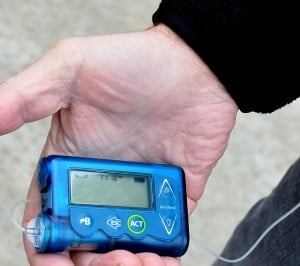Search
Research
The Challenges of Being Physically Active: A Qualitative Study of Young People With Type 1 Diabetes and Their ParentsBenefits of physical activity are well recognized for youth with type 1 diabetes mellitus (T1DM), but being active is challenging. In this study, we aimed to investigate the challenges experienced by adolescents, their parents and young adults with T1DM when they are physically active.
Research
Lipid profile is associated with treatment regimen in a large cohort of children and adolescents with Type 1 diabetes mellitusOur results indicate that pump therapy is associated with a better lipid profile
Research
Role of HLA-DQ typing and anti-tissue transglutaminase antibody titers in diagnosing celiac disease without duodenal biopsy in type 1 diabetesHLA-DQ typing is not cost effective as a first-line screening test for CD in T1D patients because of over-representation of CD permissive HLA alleles in this group
Research
Type 2 Diabetes in Indigenous Australian childrenRates of type 2 diabetes are higher among Indigenous than non-Indigenous Australian children and adolescents.

News & Events
High hopes for preventing lowsResearchers led by the team at the Children’s Diabetes Centre at The Kids have taken a key step to a fully automated closed-loop insulin delivery system.
News & Events
30% of children at risk of future heart diseaseAlmost 30% of 14-year-old Australian children fall within a group identified as being at future increased risk of heart disease, type 2 diabetes or stroke

News & Events
Cholesterol and blood pressure drugs help teens with diabetesThe study involved screening young people to learn more about the development of long-term kidney, eye and cardiovascular complications in adolescents with T1D.
Research
Shoulder dystocia in babies born to Aboriginal mothers with diabetes: a population-based cohort study, 1998–2015Australian Aboriginal and Torres Strait Islander women with diabetes in pregnancy (DIP) are more likely to have glycaemic levels above the target range, and their babies are thus at higher risk of excessive fetal growth. Shoulder dystocia, defined by failure of spontaneous birth of fetal shoulder after birth of the head requiring obstetric maneuvers, is an obstetric emergency that is strongly associated with DIP and fetal size.
Research
Longitudinal Type 1 and 2 Diabetes Plasma and Serum RepositoryThe Serum & Plasma bank was established to provide a store of samples from subjects with diabetes as well as their families.
Research
Exercising Safely with Type 1 Diabetes – Development of Clinical GuidelinesOur research focuses on what are the best ways for patients with Type 1 Diabetes to exercise safely. We aim to develop clinical guidelines that provide improved advice for patients and educate patients on how to prevent hypos during and after exercise.
